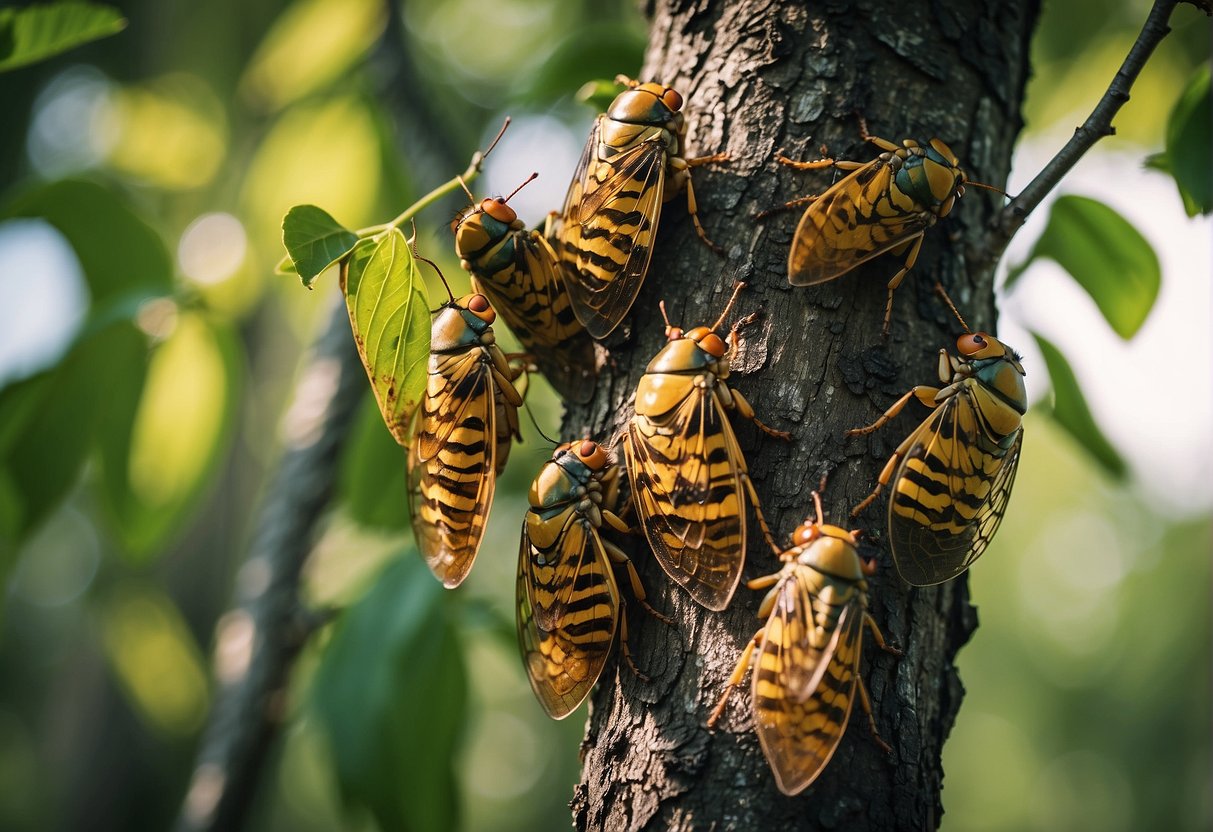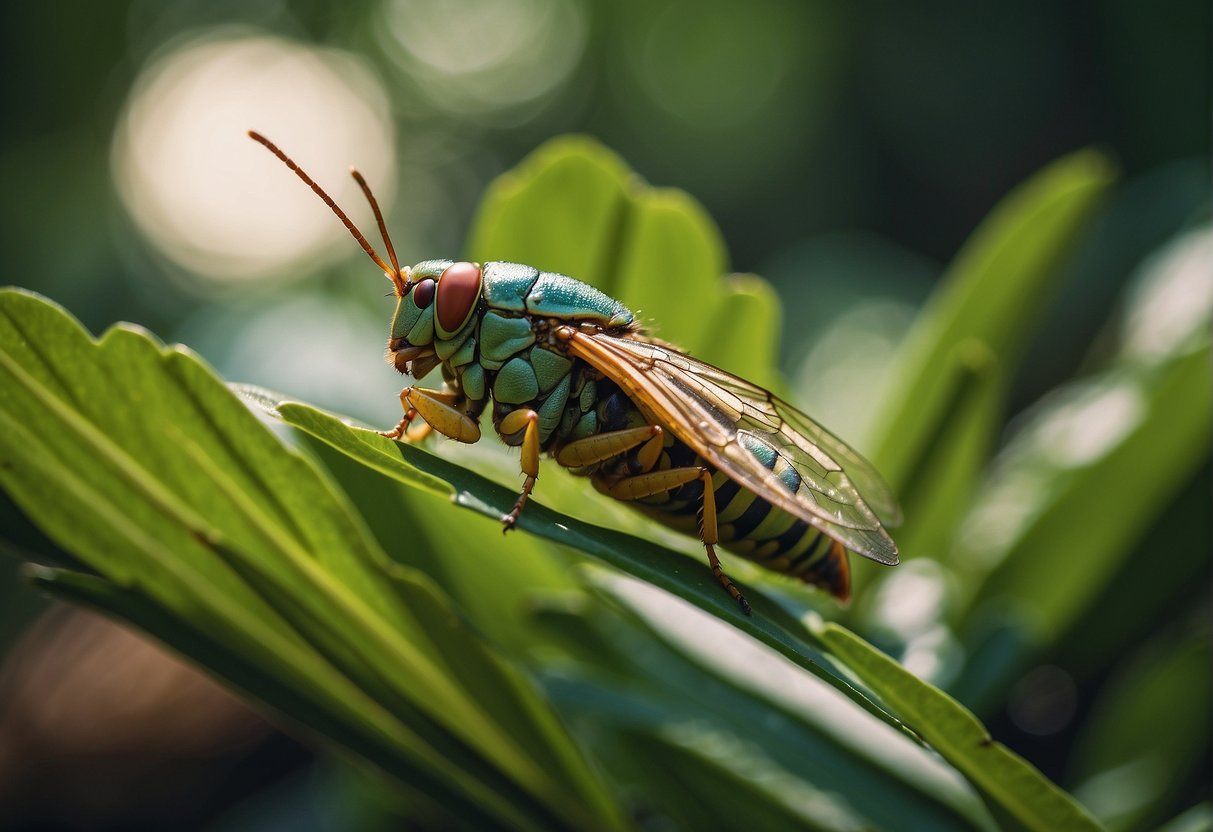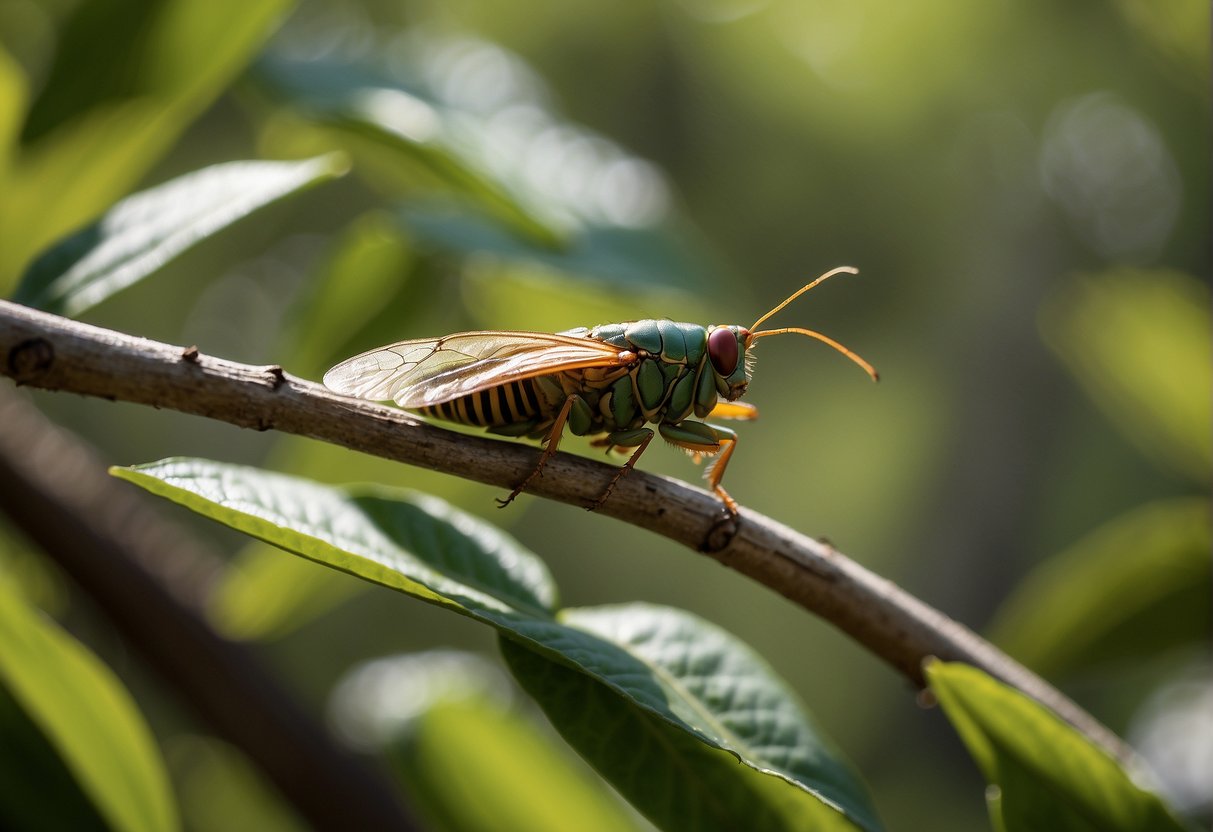Cicadas in Florida: What Will Happen in 2024
If you live in Florida, you may have heard the loud, buzzing calls of cicadas during the summer months. These fascinating (somewhat disgusting) insects are known for their unique songs, which can be heard from trees and bushes throughout the state. With over 19 species of cicadas in Florida, there is a lot to learn about these fascinating creatures.
Cicadas are not only known for their loud calls, but also for their interesting life cycles. They spend most of their lives underground as nymphs, feeding on tree roots before emerging as adults to mate and lay eggs. Once they emerge, cicadas only live for a few weeks, making their loud calls a short but memorable part of Florida summers. While some may find the sound of cicadas annoying, they are actually beneficial for the environment and play an important role in the ecosystem.
Understanding Cicadas
Cicadas are large insects that are known for their loud calls that can be heard from a distance. In Florida, there are nineteen species of cicadas. They belong to the family Cicadidae, which is a member of the order Hemiptera. Cicadas are known for their unique life cycle and physical characteristics. In this section, we will provide an overview of cicadas, including their species, life cycle, physical characteristics, and sound.
Species Overview
In Florida, the most common cicada species are Tibicen spp., Diceroprocta spp., and Cicadetta spp. The Neocicada hieroglyphica is also found in Florida, but it is less common. Cicadas are known for their large size, with adults ranging from 1 to 2 inches in length.
Life Cycle
Cicadas have a unique life cycle that can last up to 17 years in some species. Cicadas spend most of their life underground as nymphs, feeding on the sap of tree roots. After a period of several years, the nymphs emerge from the ground and molt into their adult form. The adults then mate and lay eggs, starting the cycle over again.
Physical Characteristics
Cicadas have a distinctive appearance, with large eyes and transparent wings that fold over their bodies. They also have a hard exoskeleton that protects their body. Cicada forewings are membranous and have a network of veins that provide support. Cicadas are also known for their loud calls, which are produced by the males.
Sound
Cicadas are known for their loud calls, which can be heard from a distance. The sound is produced by the males, who use their tymbals to create a loud buzzing noise. The sound is used to attract females and to establish territory.
Are Cicadas Going to Emerge in 2024?
Yes, there will be cicadas in Florida in 2024. According to various sources, including a report from the University of Florida, cicadas are expected to emerge in Florida in 2024. This emergence is part of a rare event where two broods of cicadas will emerge in multiple states across the Southeast and Midwest, including Florida.
Periodic cicadas, known as “Brood X,” are expected to emerge in 2024 after 17 years underground. These cicadas are anticipated to emerge in various regions of Florida, and their emergence is often associated with large numbers and loud mating calls.
Common Species in Florida

Identification Tips
Small Cicadas
The small cicadas in Florida are less than 7 mm in length and include the following species:
- Little brown cicada (Cicadetta calliope): This species has a brown body and is commonly found in pine forests.
- Little green cicada (Cicadetta floridensis): This species has a green body and is commonly found in oak forests.
Medium Cicadas
The medium-sized cicadas in Florida are between 10-25 mm in length and include the following species:
- Southern grass cicada (Cicadettana calliope calliope): This species has a green body with black markings and is commonly found in grassy areas.
- Scissor grinder cicada (Neotibicen pruinosus): This species has a green body with white markings and is commonly found in deciduous forests.
- Swamp cicada (Neotibicen tibicen): This species has a brown body with green markings and is commonly found near ponds and wetlands.
Large Cicadas
The large cicadas in Florida are over 25 mm in length and include the following species:
- Coastal scissor grinder cicada (Neotibicen pruinosus fulvus): This species has a brown body with yellow markings and is commonly found near the coast.
- Giant cicada (Neotibicen auletes): This species has a black body with green markings and is commonly found in deciduous forests.
Cicadas in Florida’s Ecosystem

Cicadas are a common sight and sound in Florida’s ecosystem, and they play an important role in the environment. Here are some key facts about cicadas in Florida.
Habitat and Distribution
Cicadas prefer to live in wooded areas, and they are often found in trees and shrubs. You can hear cicadas singing in the summer months, especially during the hottest parts of the day.
You might want to take that into account when you plan camping trip in Florida.
Diet and Predation
Cicadas feed on the sap of trees and shrubs, and their feeding can cause damage to the roots and branches of these plants. However, cicadas are not considered to be a significant pest in Florida. Cicadas are also preyed upon by birds and small mammals.
Role in the Environment
Cicadas play an important role in the environment. They are a food source for wildlife, including some bird species and mammals. Cicadas also help to aerate the soil by digging tunnels with their sharp ovipositors. This allows water and air to penetrate the soil, which is important for the health of trees and other plants. Additionally, cicadas are important pollinators, and they help to distribute pollen from tree to tree.
Experiencing the Cicada Phenomenon

When the time comes, these cicadas will emerge from the soil surface, climb tree twigs, and molt their shells to become adults. The sight of cast nymphal skeletons on the trunks of trees or on shrubs is a common occurrence. A single acre of land could give rise to over one million immature “nymph” cicadas, making it a truly colossal event.

I am a father of a 2 energetic boys. If one of them accidently sleeps past 6am, the other one make sure he will wake up. Traveling is our favorite activity as a family and we try to do it almost every time school is out. Our favorite location is Florida (coming from Baltimore the warm weather is usually a blessing).
